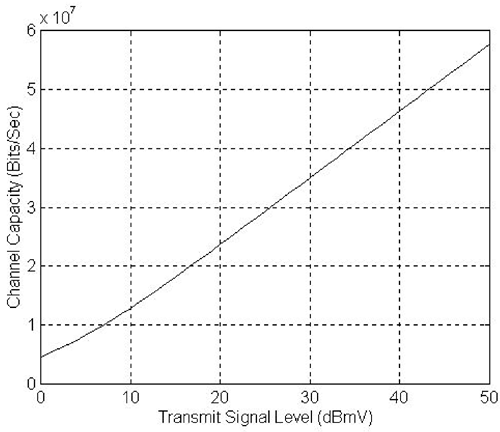3.8 Channel Capacity
| Channel capacities of in-house coaxial cable wiring can be calculated based on coaxial cable channel model, ingress noise model, and the transmit signal PSD. We use the following expression: Equation 3.13
where we choose f1 = 42 MHz and f2 = 52 MHz. Channel capacities are shown in Figure 3.13 for PSD levels from 0 to 50 dBµV. Figure 3.13. Channel Capacities of In-House Coaxial Cable Wiring
At a minimal transmit signal level of 0 dBµV, the channel capacity of the in-house coaxial cable wiring is small in the frequency band between 42 and 52 MHz. This is because the signal level is close to the noise floor of about 40 dBµV when the channel loss is about 30 dBµV. The effect of additional noise interference carriers further reduces the channel capacity. On the other hand, when the transmit signal level is relatively strong at 50 dBµV, about 316 millivolts (mV) on an impedance of 75 ohms, the channel capacity becomes about 60 Mbps. Under this transmit signal level, a home network transmission system with reasonable complexity of signal processing can be implemented for a transmission throughput of higher than 30 Mbps in the frequency gap of between 42 and 52 MHz. |
EAN: 2147483647
Pages: 97

